THE LOW TEMPERATURE DIFFERENCE RADIANT SYSTEMS
Definition of radiant system
The radiant system, for heating and cooling, is a system that allows maintaining the desired temperature in an environment by exploiting the thermal radiation of the floor, ceiling, or walls. Since radiant systems require a water temperature not much different from that in the environment, typically 35 °C in winter and 18 °C in summer, they are also defined as low-temperature difference radiant systems, a characteristic that allows making the most of high-efficiency generators, such as condensing boilers or heat pumps, as they increase their performance.
Operating temperatures
Even though theoretically radiant systems could reach very high powers, the correct design should take into account the surface temperature limits defined by the technical regulations and reported in table 1. These are limitations suggested to satisfy the comfort parameters according to ISO 7730, or to avoid the formation of surface condensation in the cooling phase. Therefore, the correct design of air treatment systems is fundamental when intending to exploit a radiant system in cooling. In fact, the higher the humidity in the environment at the same air temperature, the higher the water temperature of the system must be to avoid the formation of surface condensation and therefore lower thermal yield.
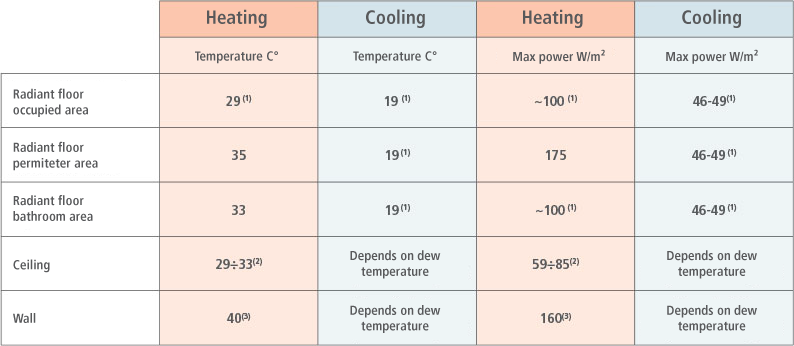
(1) The limit depends on discomfort reasons
(2) The limit on radiant asymmetry must be less than 5K
(3) The limit is due to radiant asymmetry and the distance from the wall of the occupants
Radiant comfort
The thermal comfort guaranteed by radiant systems is superior to other systems that work by convection, as the presence of one or more radiant surfaces allows a great uniformity of temperature in every area of the room. Moreover, since the radiant surface transfers heat both to the air and to other surfaces, the average radiant temperature is higher than the air temperature in heating mode and lower in cooling mode, positively influencing the operative temperature. The operative temperature expresses the overall heat exchange of a person with the surrounding environment and can in many cases be simplified as the average of the air temperature (Ta) of the average radiant temperature (Tmr), as seen previously in the chapter dedicated to thermal comfort. With a radiant heating system, it will therefore be possible to have the same comfort condition as a radiator system even with lower air temperatures; but above all, the difference between air temperature and average radiant temperature is reduced, guaranteeing maximum thermal uniformity. Similarly, in cooling mode, the power requirements can be met even with air temperatures close to those of the surfaces (unlike convective systems that provide significantly lower air temperatures). A possible distribution of temperatures inside a room with an external wall equipped with a large window and a radiant ceiling system, could be summarized in the table below on the assumption of being able to measure the surface temperature of the walls, the air temperature and evaluate the average radiant temperature. In this case, it should be noted that both the ceiling temperature and that of the window directly influence the operative temperature, which will however be close to that of the air. A similar argument could be made for the floor, in the case of a wall with a large window and internal walls, the operative temperature would be influenced both by the radiant floor and by the temperature of the window frame.
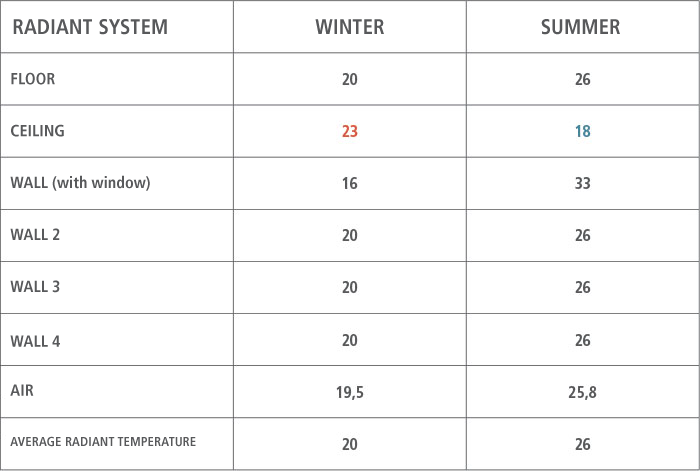
RADIANT VS RADIATOR IN HEATING
The images describe, in a purely indicative way, how the radiant, both in heating and cooling, uniformly transmits heat in winter and cold in summer, creating a homogeneous comfort zone.
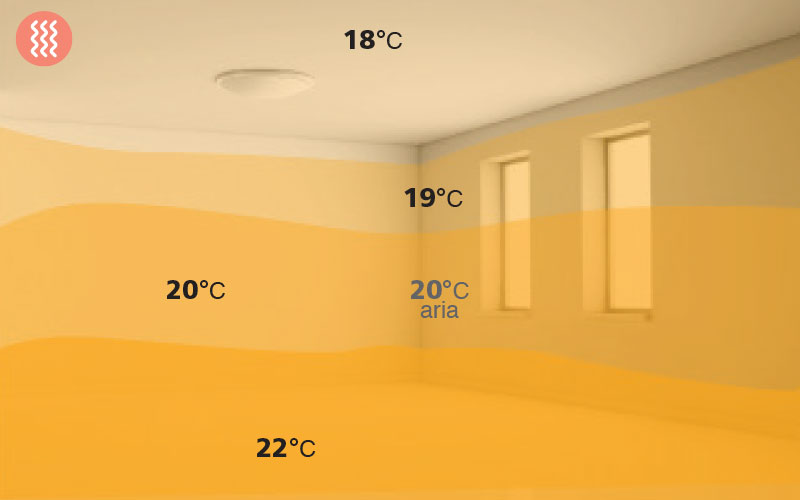
Heating with radiant floor.
The average radiant temperature is greater or close to that of the air and there is a considerable uniformity of temperatures.
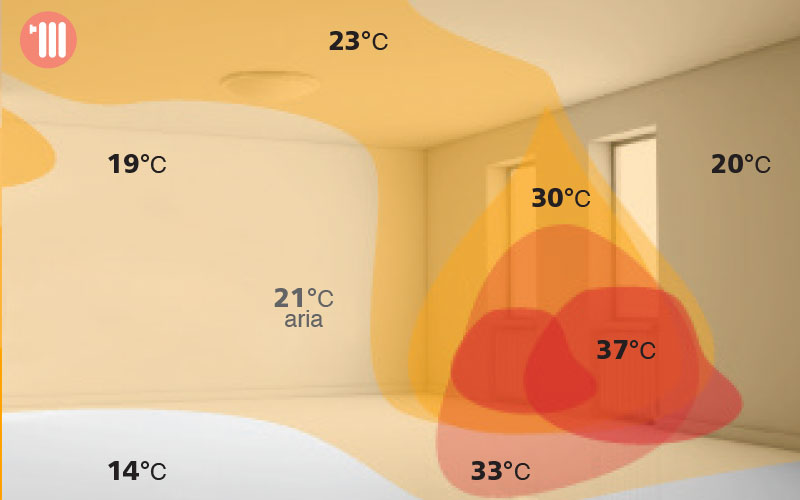
Heating with radiator.
The average radiant temperature is lower than that of the air. Little uniformity of temperatures.
RADIANT VS AIR SYSTEMS IN COOLING
The images describe, in a purely indicative way, how the radiant, both in heating and cooling, uniformly transmits heat in winter and cold in summer, creating a homogeneous comfort zone.
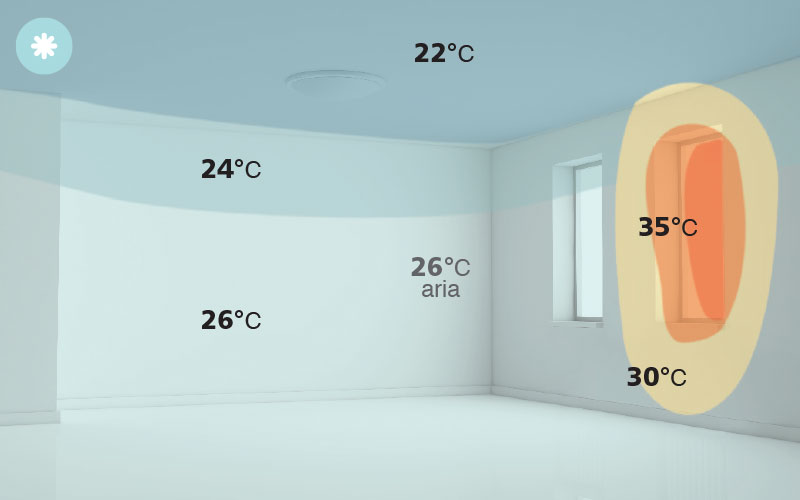
Cooling with radiant ceiling.
The average radiant temperature is lower or close to that of the air and there is a considerable uniformity of temperatures.
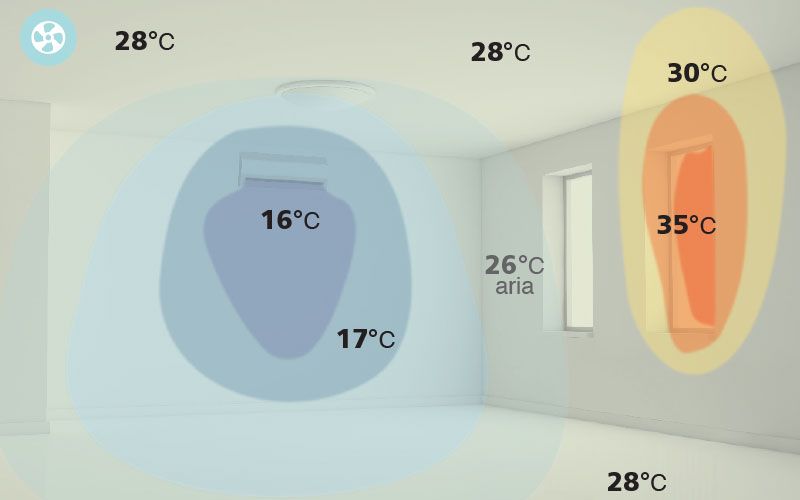
Air cooling.
The average radiant temperature is higher than that of the air and there are cold air currents.
To conclude, a general comparison is reported between convective systems (such as radiators, convectors, fan coils) and radiant systems from the point of view of comfort, energy efficiency, aesthetic aspect, and plant limitations.
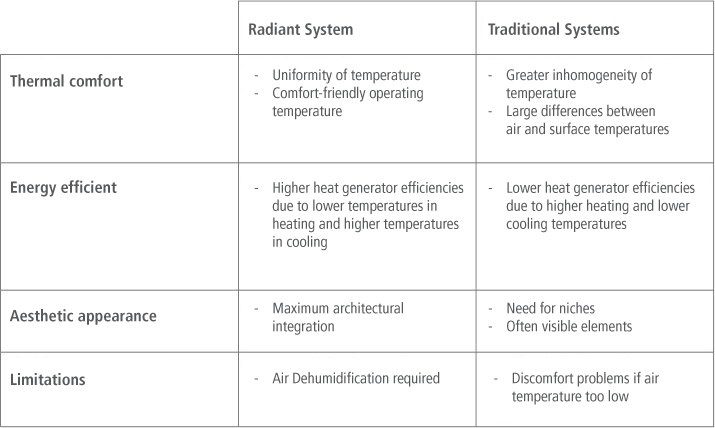
TYPES OF RADIANT SYSTEM
Radiant systems are divided into:
- Floor Systems
- Ceiling Systems
- Wall Systems
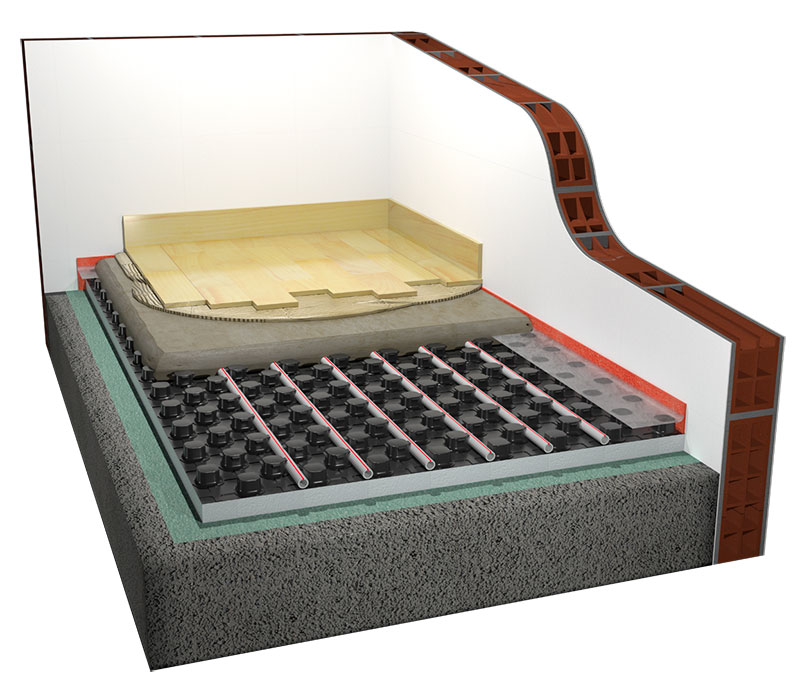
RADIANT FLOOR SYSTEMS
Radiant floor systems have been used in the past mainly for heating in residential construction, but in recent years they have also started to spread for cooling.
They can be divided into:
- Smooth slab systems
- Nubbed slab systems
- Dry systems
- Low-thickness systems
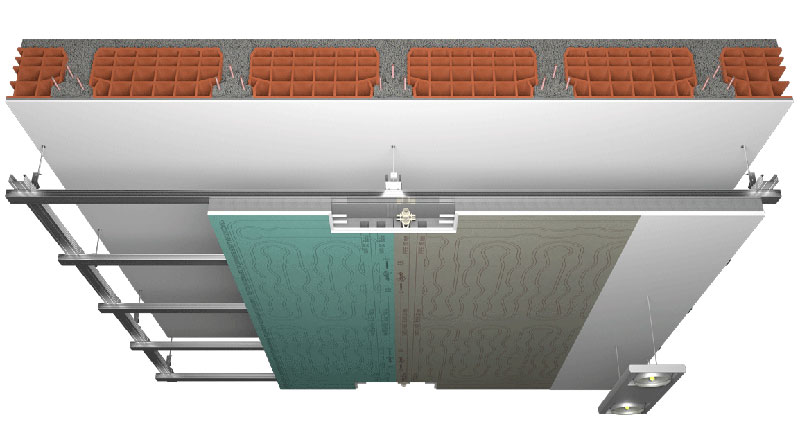
RADIANT CEILING SYSTEMS
Radiant ceiling systems were born to meet the cooling needs of tertiary structures, where high summer loads did not allow the use of radiant flooring. Subsequently, also thanks to the progressive reduction of winter needs for homes, they have also started to spread for heating.
The two main categories are:
- Metallic ceiling systems
- Prefabricated plasterboard ceiling systems
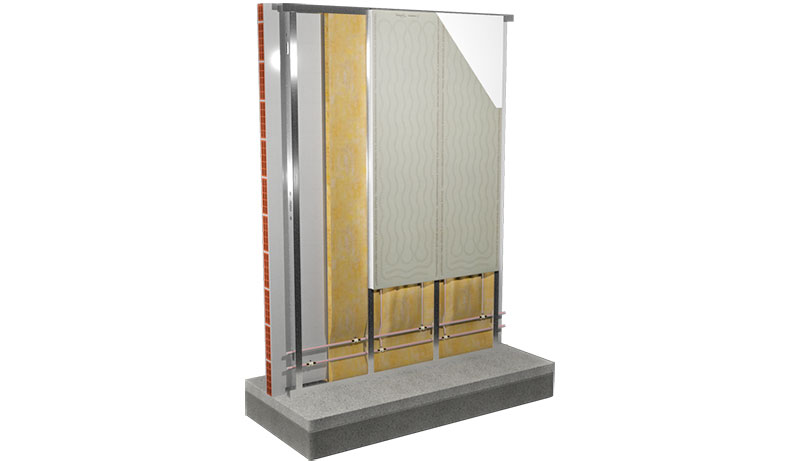
RADIANT WALL SYSTEMS
Radiant wall systems mainly perform a function of assistance to the radiant system present on the floor or ceiling. A limit of these systems is the need for a wall free from furniture that must remain so throughout the entire life of the system itself. That’s why it is usually applied in particular rooms such as stairwells or hotel rooms. They can generally be distinguished into:
- Embedded systems
- Plasterboard systems

